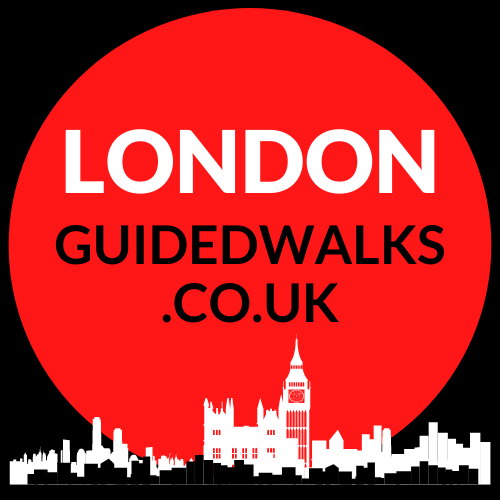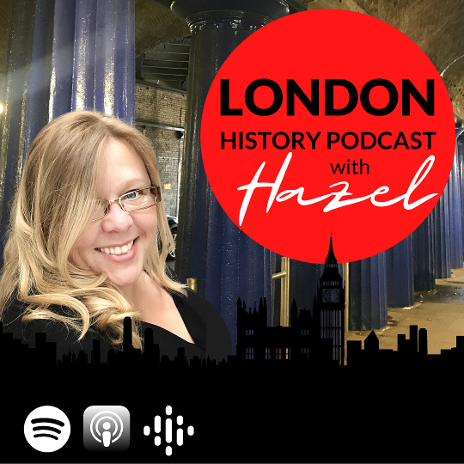Related blog post:
Support us on Patreon from as little as £5.
Gain access to exclusive content including behind the scenes videos, full transcripts, shout outs and mini videotours!
Show notes:
Hello, and welcome to our London history podcast, where we share our love of London, its people, places and history. This podcast is designed for you to learn things about London that most Londoners don't even know; all in 20 minutes. I am your host, Hazel Baker, qualified London tour guide and CEO of www.londonguidedwalks.co.uk
We deliver walking tours of London to those who love London. No matter whether you are a Londoner or a visitor, we will help you make the most of London. Check out our website londonguidedwalks.co.uk for a full selection of guided walks and private tours.
If you enjoy what we do, then please rate and review. You could become a patron for as little as five pounds. That’s where we share additional videos of the interviews with you. Plus lots of other unique content. You help us keep this podcast advert free. For more information of how to support us visit patreon.com/londonhistory
If you like what you're hearing, then please rate and review on Apple or Google podcasts. Thank you to all of you who have left a review. It's really very much appreciated.
Get that cup of tea, put your feet up and enjoy.
Where was London's first railway terminus?
The railway first entered London in the 1830s, just before Queen Victoria's accession to the throne.
The first section of the London and Greenwich Railway was built on a viaduct between Spa Road in Bermondsey and Deptford, near Lewisham. It was the first occasion where locomotives ran over a proper railway in the London district. There had been earlier attempts to run a railway in London but that's for another day…
Where is Spa Road Station? Thousands of you will have unknowingly gone through Spa Road station if you have travelled into London Bridge by train. It's no longer a terminus, in fact, it's no longer a station. There are only fragments left to be seen but I have taken a video which I will add into the show notes on the website.
Our story starts in late Georgian London….
Georgian Bermondsey was ripe for development. In 1829, James Savage completed St James' Church, just off Jamaica Road. You may have noticed it when coming into London Bridge from Blackheath or Greenwich. (photo of St James' Church)
In 1833 an Act of Parliament granted the London & Greenwich Railway the rights to build a 4-mile-long (6.4 km) railway from the south end of London Bridge to Greenwich and to run trains along it for passengers. Technical advances and finances were available and so made what, to some would have only been a dream, become a very exciting reality.
The ultimate dream was for the railway to reach from London to Dover and there was much talk of a London to Gravesend extension from Greenwich too.
During 1835, construction of the viaduct both at the Greenwich and London Bridge ends continued while test runs of trains were made along the route. By early 1836 there was considerable pressure to open the railway especially from the investors. The heat was on and revenue was needed. There was welcome publicity to be had from being the first railway to run trains in London. It's not the one who did it properly who goes down in history but those who come first, no matter the cost. Another consideration was the company's stock price, which stood high at the end of 1835 but was at risk of falling if the line was not soon opened. The board decided to open a 2.5 miles stretch from Spa Road to Deptford; 1 mile to Tooley Street & 0.5m to Greenwich. Spa Road was a temporary terminus during the completion of London Bridge Station.
The subsoil was a blackish peat, which gave considerable problems, and Landmann pioneered the use of concrete to reinforce the foundations. Even so, several of the piers, near Corbetts Lane, moved four or five inches (100 - 125mm) out of the perpendicular. Elsewhere, iron ties were used to prevent lateral movement (bowing walls) in the brickwork.
An early locomotive was used. Built for the South Eastern Railway, the overall length of the engine and tender was 36 ft. 4 in. The cylinders measured 15 in. by 18 in. and the drivers 5 ft. 6 in.
The first train left Deptford for Spa Road Station at 8am on Monday 8th February 1836 marked the start of a regular service from Spa Road. Just three weeks after two arches close to Tooley Street collapsed (18 Jan 1836).
It must have been quite an experience to speed along in a train along the viaduct above the surrounding buildings of South East London and countryside. The Birmingham Journal on the 13th February 1836 reported “A passenger in a Greenwich Railway carriage, on Monday last, says, that in one of the experimental trips, the train of six carriages was conveyed at the rate of a mile per minute, or 60 miles per hour! He adds that the sensation experienced was that of flying, rather than that which is felt in the most rapid of ordinary modes of travelling. There were two numerous parties of ladies in the carriages, who seemed highly delighted.”
Trains ran hourly on the half-hour from Spa Road, from 8.30 am to 5.30 pm, with a fare to Deptford costing 6d. At the line’s opening, fares were one shilling (5p) first class; and eight pence (3p) second class. There were no services after dark, as there were no signals on the line and it was not illuminated.On the Whit Monday, following the official opening, the line carried around 13,000 passengers.
Spa Road was the first London terminus, albeit for less than a year. The London Bridge to Deptford line opened in December 1836. The line extended to Greenwich and opened in 1838.
The London Bridge - Greenwich line hit a number of firsts:
⁃ It was the first steam railway in London
⁃ It was the first to be built specifically for passengers
⁃ It was an entirely elevated railway - it’s an early C19th engineering marvel
Other Episodes
067 London Street Names: Food Edition
064 Medieval Toilets in London
062 James Scott, the First Duke of Monmouth
061 Medieval London at the Museum of London
060 Virginia Woolf & The Bloomsbury Set
058 Greenwich Palace and Hospital
057 The Gerald Coke Handel Collection
053 Benjamin Franklin in London
051 Walk Through London's Forgotten Places
047 Victorian Dinosaurs in Crystal Palace Park
046 Beer, The Bard & Historic Buildings of Bankside
045 Drawing London's Buildings
042 John Julius Angerstein: The Man Behind the National Gallery
041 London's Medieval Friaries
040 Charles Dickens in Greenwich
038 The Black Death: London's First Plague
037 Bridgerton & Regency London
034 London's Old Shops - Food & Drink
031 Abandoned London Underground Stations
030 Quirky Street Names - Little Britain
029 The Harp maker of Fitzrovia
024 The Walbrook in Roman London
021 London Area Names - Animal Edition
020 The Great Fire of London - How It Began
017 The Proms & The Royal Albert Hall
016 Women in 1920s London (From Cowgirl to Congress)
014 Postcards From London's Past
013 London Statues: Medical Women
012 The Old Operating Theatre Museum
011 London's Coffeehouses and Commerce
009 Music Halls and Cabaret - from yesterday to today
008 The Monument to the Great Fire of London
006 Hockley in the Hole Clerkenwell
Some links contain affiliate links, which means that if you click on one of the product links, we receive a small commission. This helps support our free podcast. Thank you for the support!
Copyright London Guided Walks and Treasure Hunts


